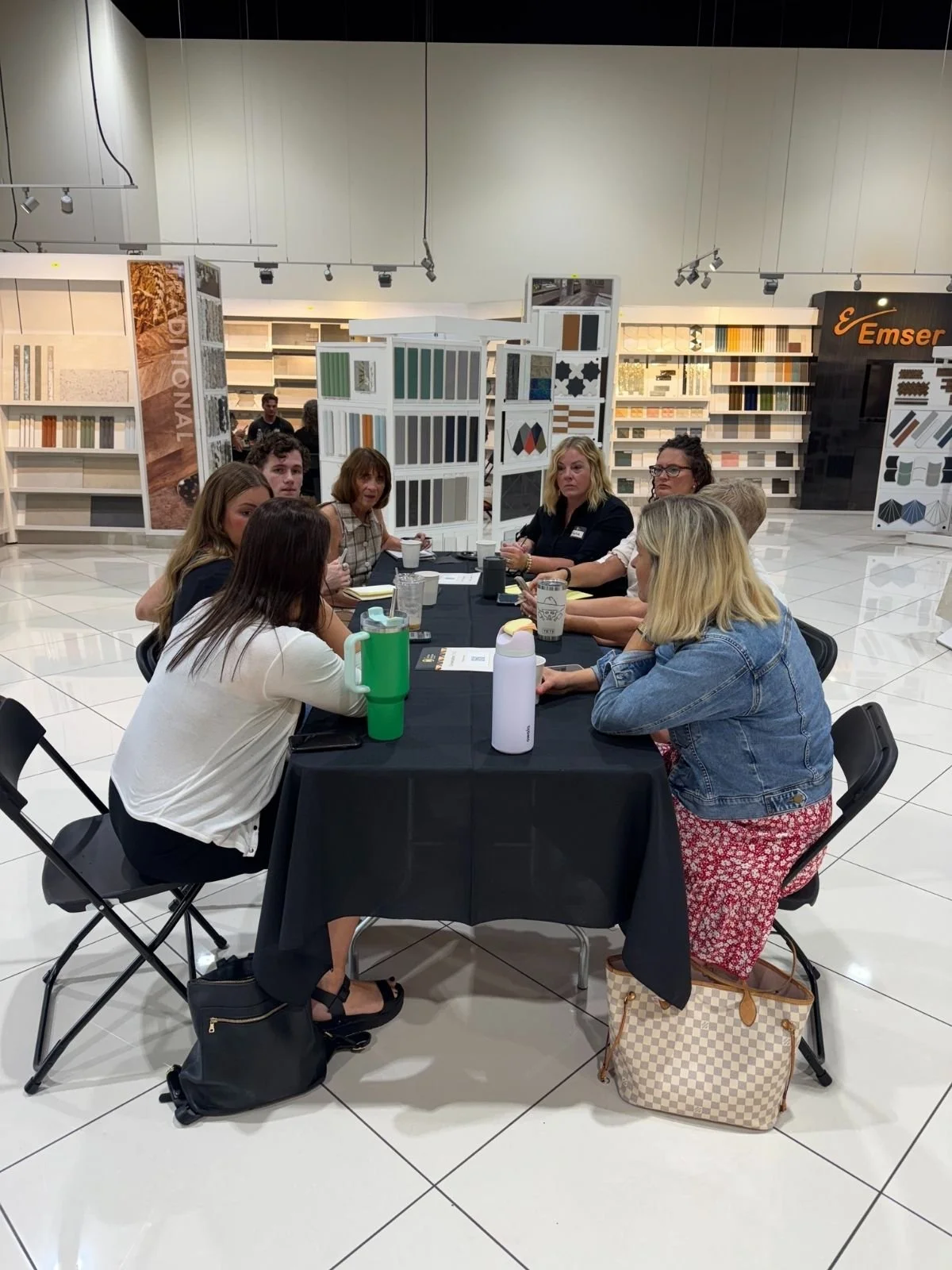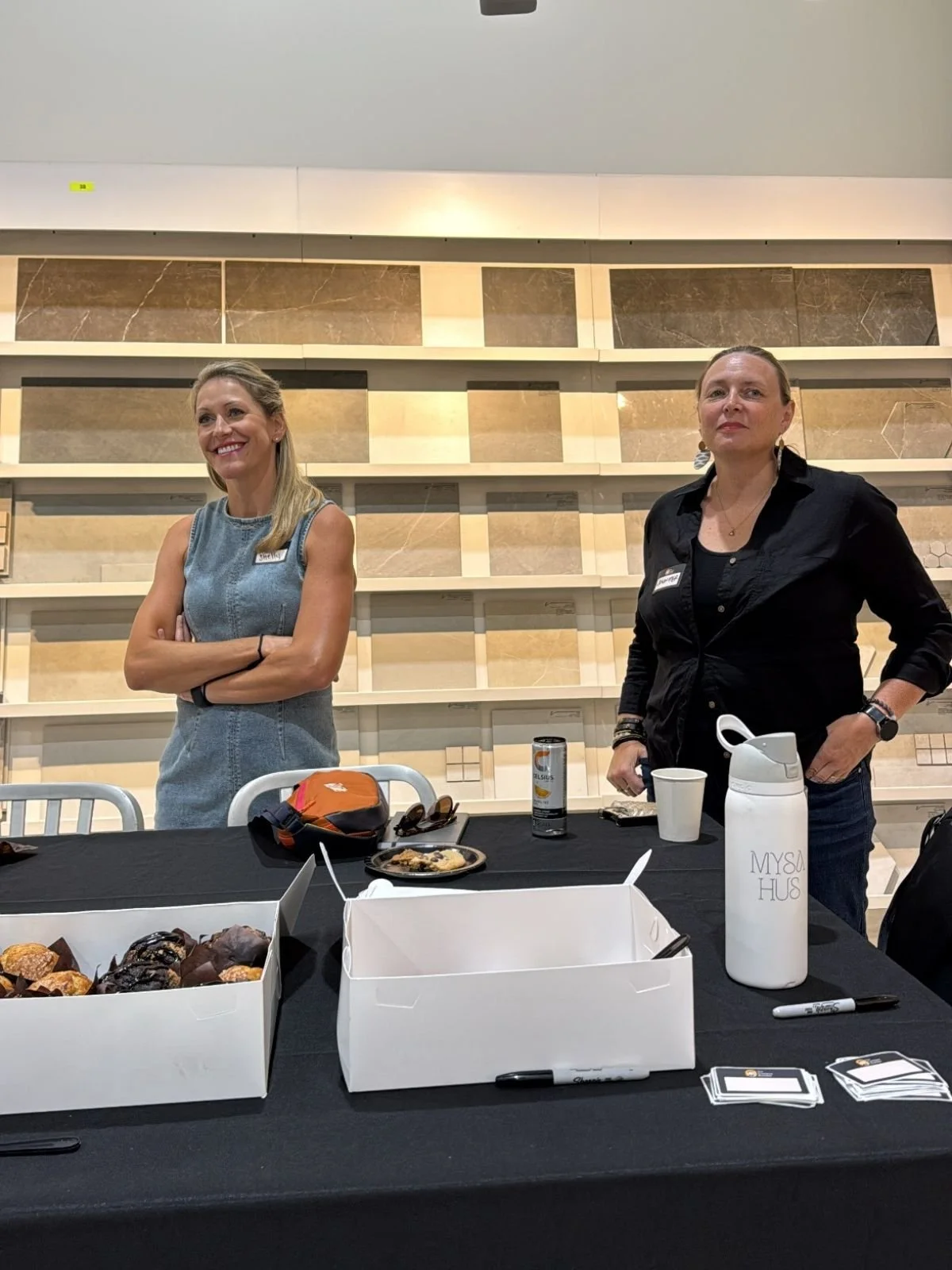Insights from the Curious Designer Collective: AI for Interior Design
On August 15, 2025, the Minneapolis design community gathered at the Emser Tile Showroom in Plymouth, MN, for a conversation on one of the most controversial topics in the industry: AI for interior design and construction.
Hosted by the Curious Builder’s Curious Designer Collective, the event brought together builders, designers, and creatives for a candid discussion about technology, ethics, and innovation. Morgan Molitor of Construction2style led the conversation, sharing real-world ways she’s already integrating AI into her business.
The Intersection of AI and the Design Industry
The evening opened with a big picture look at how tools like ChatGPT, Midjourney, and DALL·E 2 are shaping the industry. This includes mood board creation and concepting, early-stage ideation and client presentations, and visual language refinement through AI-generated prompts.
“Artificial intelligence isn’t replacing creativity—it’s enhancing it,” said Molitor. “Tools like ChatGPT help us articulate what’s already in our heads, faster and with more clarity.”
AI can spark inspiration during design project brainstorming, while still leaving the artistry and intuition of design to the human professional.
Ethical Considerations and Client Transparency
One of the liveliest conversations of the evening centered on ethics and client communication. Designers raised questions about originality, copyright, and credit. How much should clients know about AI’s role in their projects?
The group agreed: Artificial intelligence should be used responsibly and transparently. Clearly labeling AI-generated images or 3d visualizations and content helps maintain trust.
As Mark shared, “Ethics matter. Just because we can use AI doesn’t mean we should do it blindly. I want clients to know I’m still the one behind the decisions.”
Improving Project Management and Team Collaboration
The conversation then shifted from visuals to operations. Designers shared how AI is transforming project management and back-office tasks thro9ugh automation tools. It can draft client emails, create spec sheets, summarize meeting notes, and act as a virtual assistant for solopreneurs.
One builder commented, “One of my biggest pain points is writing scope documents. If AI can help me create a starting draft, that saves hours.”
Others noted that AI could help smaller firms look polished and professional, while freeing up more time for client-facing work. Using AI for some of these non-creative tasks can free designers and industry professionals up to do what only they can do!
Want to learn more about using AI? Check out this blog!
Tone Bots and Brand Voice in Automation
Morgan introduced the room to tone bots: custom-trained AI models designed to reflect a company’s specific voice. These bots can generate social media captions, proposals, or even tough client responses in a brand’s signature style.
“The biggest game changer for me has been tone bots,” Molitor explained. “We created one trained on our brand’s voice, and it’s scary accurate.”
While the group was fascinated, they also acknowledged the importance of balance, ensuring that automation enhances rather than dilutes a brand’s authentic voice.
Where the Industry Is Headed (and Why In-Person Still Matters)
The event closed with gratitude for what made the evening powerful: real, in-person conversation. While AI is reshaping workflows, attendees agreed that nothing replaces gathering together to share experiences and challenges.
“The moment I realized AI could actually sound like me—that’s when I got excited and a little nervous,” said one participant. That mix of curiosity and caution reflects where the industry stands today: intrigued by AI’s potential but committed to keeping human creativity and connection at the center.
AI for Interior Design
The Curious Designer Collective isn’t just about learning new tools, it’s about community, conversation, and curiosity. As AI continues to evolve, these gatherings create space for candid dialogue about what’s working, what’s not, and how to move forward together.
If you’re part of the Minneapolis design community, don’t miss the next Collective event. AI may be fast, but human connection will always be the cornerstone of great design.





